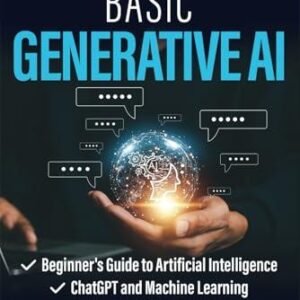In an era defined by rapid technological advancement, the construction industry stands at a pivotal crossroads. The integration of AI robotics into urban development is not just a trend; it is reshaping the very fabric of how we design, build, and inhabit our environments. From enhancing project efficiency to improving safety and precision, these intelligent systems are revolutionizing construction practices and redefining what it means to build ‘smart’ cities. As urban populations continue to swell and the demand for sustainable infrastructure rises, the role of robotics in construction becomes increasingly critical. In this article, we will explore how AI-powered robotics are transforming urban development, delving into their applications, benefits, and the challenges that lie ahead. Join us as we uncover the future of construction and envision a world where innovation meets infrastructure in harmonious collaboration.
Table of Contents
- Advancing Efficiency Through AI Robotics in Urban Construction
- Enhancing Safety Measures with Smart Robotics Integration
- Sustainable Building Practices: AI-Driven Solutions for Urban Development
- Future-Proofing Cities: Strategies for Implementing Robotics in Infrastructure Projects
- Final Thoughts
Advancing Efficiency Through AI Robotics in Urban Construction
The integration of AI robotics in urban construction not only optimizes workflows but also significantly reduces waste and boosts overall productivity. With advanced algorithms and machine learning, robots can analyze site data in real-time to make necessary adjustments that enhance construction efficiency. Key benefits include:
- Precision Scheduling: Robots can predict project timelines more accurately, minimizing delays.
- Labor Optimization: Automating repetitive tasks allows human workers to focus on complex, value-added activities.
- Resource Management: AI systems can assess resource use and suggest adjustments to minimize excess.
Moreover, the flexibility of robotics means they can adapt to various construction methods and materials, making them suitable for a range of projects from residential buildings to large infrastructure developments. Construction sites equipped with AI-driven robotics experience enhanced safety protocols, as these machines handle hazardous tasks that typically place human workers at risk. Below is a comparison of traditional vs. AI robotics-enhanced construction processes:
| Feature | Traditional Construction | AI Robotics-Enhanced Construction |
|---|---|---|
| Workforce | High dependency on manual labor | Reduced labor intensity |
| Efficiency | Time-consuming | Fast-paced and adaptive |
| Cost | Potentially higher due to delays | Lower due to optimized resource use |
Enhancing Safety Measures with Smart Robotics Integration
Incorporating smart robotics into urban construction is revolutionizing safety protocols, allowing for greater efficiency and risk reduction on job sites. Automated drones can conduct real-time site inspections, identifying hazards before human workers arrive. Meanwhile, robotic exoskeletons enable laborers to lift heavy materials with less strain, significantly decreasing the risk of workplace injuries. The integration of AI-driven monitoring systems ensures that safety compliance is continuously evaluated and enforced, creating a more secure environment for all involved.
The potential of these innovative technologies is vast, with numerous advantages leading to improved safety outcomes. Key benefits include:
- Real-time data analytics to predict and prevent accidents.
- Enhanced communication between workers and machines, minimizing misunderstandings.
- Automated safety checks, reducing human error.
As we embrace this shift towards automation, the focus on safety not only protects workers but also fosters a culture of accountability and vigilance in the construction industry.
Sustainable Building Practices: AI-Driven Solutions for Urban Development
As urban populations swell and the demand for sustainable infrastructure grows, businesses are increasingly turning to AI-driven solutions in construction. These innovations streamline workflows, enhance resource efficiency, and minimize waste. By leveraging machine learning algorithms and robotic automation, developers can optimize every aspect of the building process, resulting in eco-friendly structures that utilize fossil-free materials and renewable energy sources. Key benefits include:
- Precision Planning: AI analyzes vast data sets for optimal site layouts and material usage.
- Resource Optimization: Robotics allows for accurate material tracking and reduces excess waste.
- Predictive Maintenance: AI predicts structural issues before they arise, ensuring longevity.
The integration of AI doesn’t just impact how buildings are constructed; it also fosters a shift towards smart cities. By utilizing interconnected technology and data-driven insights, urban planners can design spaces that adapt to the needs of their inhabitants. This interconnectedness means that environmental factors are considered in real-time. For example:
| Feature | Impact |
|---|---|
| Smart Energy Systems | Optimize energy consumption and reduce carbon footprints. |
| Real-time Traffic Management | Minimize congestion and improve air quality. |
| Water Conservation Technologies | Implement systems to manage and recycle water effectively. |
Future-Proofing Cities: Strategies for Implementing Robotics in Infrastructure Projects
The integration of robotics in urban infrastructure projects promises to revolutionize the way cities are developed and maintained. To effectively future-proof cities, it is essential to adopt strategic approaches that incorporate these advanced technologies into construction processes. One key method involves the deployment of autonomous machinery that can handle repetitive and labor-intensive tasks, thereby increasing efficiency and reducing costs. This not only speeds up project timelines but also mitigates human error, resulting in higher quality outcomes.
Another strategy to consider is leveraging data analytics alongside robotics to optimize project planning and execution. By employing cloud-based platforms and AI algorithms, urban planners and construction firms can predict potential challenges and adapt their workflows in real-time. This dynamic approach allows for flexible resource allocation, minimizes waste, and ensures that sustainability goals are met. Moreover, collaboration among stakeholders—such as government agencies, tech companies, and local communities—will be vital in this transformation, ensuring that all voices are heard and innovation is aligned with the urban context.
| Robotic Technology | Key Benefits |
|---|---|
| Drone Surveying | Improved accuracy in mapping and real-time monitoring |
| Automated Bricklaying | Increased speed and consistency in construction |
| Robotic Exoskeletons | Enhanced worker safety and reduced fatigue |
| Autonomous Vehicles | Streamlined logistics and materials transport |
Final Thoughts
As we stand on the brink of a new era in urban development, it is clear that AI robotics are not just enhancing construction practices—they are revolutionizing them. The integration of cutting-edge technology into building processes promises to streamline operations, increase efficiency, and ultimately create smarter, more sustainable urban spaces for future generations.
As stakeholders in construction—from project managers to city planners—embrace these advancements, the potential for innovation is limitless. The ability to harness data, automate complex tasks, and improve safety measures is just the beginning. With the right approach, we can ensure that technology works hand-in-hand with human expertise to foster environments that are both functional and aesthetically pleasing.
As we move forward, it will be crucial for industry professionals to remain informed and adapt to these changes. Collaboration between technologists, urban designers, and policymakers will pave the way for transformative urban landscapes that prioritize sustainability and efficiency.
the future of urban development is being reshaped by AI robotics, ushering in a wave of possibilities that could redefine our approach to construction. Let’s be part of this exciting transformation and work towards building smarter cities that stand the test of time. After all, the cities of tomorrow are being built today—let’s make sure they are built to last.





